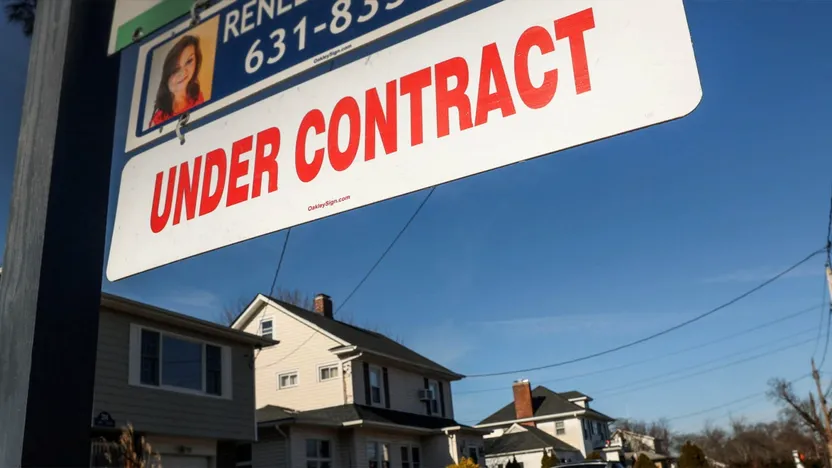How to Make and Negotiate Winning Real Estate Offers
Ready to draft a compelling offer and negotiate the best deal? This quick guide walks you through each step—from crafting your purchase offer with key contingencies to negotiating terms and finalizing the deal—while our dedicated Task Page helps you stay organized throughout the process.

Step 1: Submit a Purchase Offer
Drafting the Offer
Market Conditions: Work closely with your real estate agent to evaluate local comps (comparable sales) and market trends. This will help you determine a fair yet strategic offer price.
Protect Yourself with Contingencies
Inspection Contingency: Ensures you can renegotiate or withdraw if the inspection uncovers major issues.
Financing Contingency: Allows you to back out if your loan falls through.
Appraisal Contingency: Gives you an out if the property appraises for less than the offer amount, avoiding overpaying.
Leverage Your Agent’s Expertise
Local Market Knowledge: An experienced agent understands neighborhood-specific factors—such as average days on market or typical negotiation margins—that can influence your offer.
Offer Structuring: Decide whether to include an escalation clause (which automatically increases your offer if another buyer outbids you) or a personalized letter to appeal to the seller.
Why This Matters: A well-structured offer can give you a competitive edge in a hot market and protect your financial interests in any market. Contingencies are especially critical to ensure you’re not locked into a bad deal if unexpected issues arise.
Step 2: Negotiate the Purchase Price
Use Hard Data
Property Condition: If the inspection reveals the need for repairs, use this information to justify a lower offer or request seller credits.
Comparable Sales: Present recent sales data from similar properties in the same area to support your proposed price.
Aim for Win-Win Solutions
Seller Motivations: Understand why the seller is moving—timing, job relocation, or financial reasons. This knowledge can guide concessions or flexible closing dates.
Creative Negotiations: In addition to price, consider negotiating closing costs, repair credits, or personal property (appliances, furniture) to sweeten the deal for both parties.
Why This Matters: A strong negotiation strategy can save you thousands of dollars and possibly secure better contract terms (e.g., more favorable closing timeline, seller-paid repairs). Balancing firmness with flexibility often leads to the best outcome.
Step 3: Finalize the Deal
Secure Your Mortgage
Stay in Contact with Your Lender: Provide any requested documentation promptly. Delays in financing can jeopardize the closing.
Appraisal Process: If the home appraises lower than the sale price, be prepared to renegotiate or make up the difference if necessary.
Complete Final Inspections or Walk-Through
Confirm Repairs: Ensure the seller made the agreed-upon repairs.
Check Property Condition: A final walk-through helps you confirm no new damage has occurred since the inspection.
Close on the Property
Review Closing Documents: Title report, deed, loan documents, and settlement statement.
Finalize Payment & Transfer of Ownership: Once you sign all the closing documents and the transaction funds, the property is officially yours.
Why This Matters: Successfully finalizing the deal means ensuring all financing, inspection, and appraisal requirements are met. You don’t want last-minute surprises derailing what could otherwise be a profitable investment.
Action Items
1. Rely on Your Agent’s Expertise
Let them guide you on local market nuances, offer strategies, and negotiation tactics.
2. Consult an Attorney if Needed
Review all legal documents carefully. If anything is unclear, get professional legal advice.
3. Stay Organized with a Closing Checklist
Track important milestones: appraisal, inspection repairs, final loan approval, and closing date.
Summary
1. Draft a Strong, Contingency-Protected Offer: Shield yourself from unforeseen issues by including inspection, financing, and appraisal contingencies.
2. Negotiate Strategically: Base your counteroffers on comparable sales data and potential repair costs, aiming for a mutually beneficial agreement.
3. Finalize with Diligence: Secure your mortgage, confirm repairs, and conduct a final walk-through before closing.
By approaching the offer and negotiation process with preparation and flexibility, you’ll set the stage for a successful real estate purchase—whether it’s your first investment property or the next addition to your growing portfolio.
Current Interest Rates
United States Prime
5.25%
Canada Prime
4.75%
Last updated:
More Tools and Professionals to Consult!
Making an offer isn’t just about throwing out a number—it’s about strategy. The right offer gets you the best deal while keeping you protected. Every term matters: price, conditions, financing, and timelines. A weak offer can cost you the deal, while a well-structured one can secure the property under the best terms possible. The key? Know your numbers, understand the market, and leverage negotiation tools. Every offer should be backed by research, legal protection, and a clear plan for what comes next.
Making An Offer On Your First Investment Property
When your new to real estate investing, the thought of making an offer and filling out the paperwork and writing a contract can seem daunting. n this video, I’m going to show you the least you need to know to making an offer on your first investment property.
8 Simple Steps to Close Real Estate Deals Like a Rockstar
You can read the original article here: https://www.biggerpockets.com/blog/cl…
More Investing Tips and Strategies Real Estate
Stay informed with the latest trends, insights, and updates in the real estate world.















